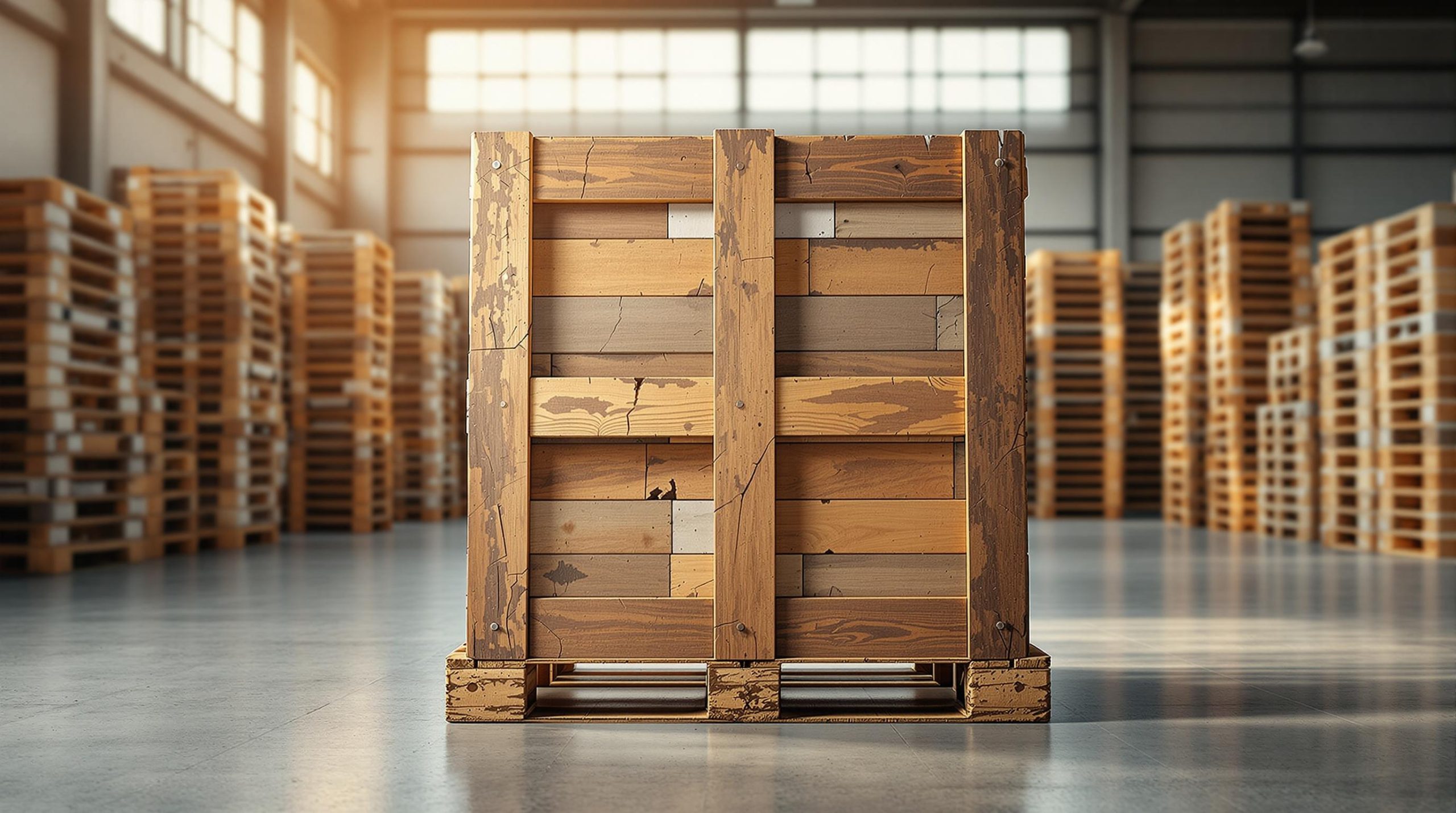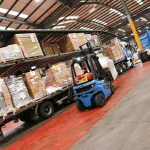
Designing Pallets That Work: Exploring Customization Options to Fit Your Unique Logistics Needs
Introduction to Custom Pallets
Why Standard Pallets Don’t Always Work
Standard pallets have been the backbone of global logistics for decades. With dimensions like the widely used 48×40-inch pallet, they serve as the “default” choice for moving goods across warehouses, factories, and shipping docks. However, as industries evolve, these standard designs don’t always fit the unique demands of modern supply chains.
Consider a company shipping oversized machinery or delicate pharmaceuticals. A one-size-fits-all pallet often leads to inefficiencies: wasted space, higher shipping costs, or even product damage during transit. The logistics chain thrives on precision, and when packaging and pallets don’t align with the product, inefficiency spreads like dominoes across operations.
This is where custom pallets step in. By tailoring pallets to fit the exact dimensions, weight, and handling requirements of a product, businesses can reduce waste, improve safety, and streamline logistics. It’s the difference between wearing an off-the-shelf suit versus a tailored one—both work, but one fits perfectly and maximizes comfort and performance.
The Role of Pallet Design in Logistics Efficiency
Pallets may seem like simple wooden or plastic platforms, but in reality, they’re critical infrastructure in global trade. They influence how products are stacked, stored, and transported. A poorly designed pallet can slow down forklifts, lead to load imbalances, and increase fuel consumption due to inefficient packing.
Custom pallet design ensures optimization at every stage. By considering factors like load distribution, storage conditions, and transportation methods, a well-designed pallet reduces costs and maximizes productivity. It directly impacts:
-
Warehouse storage capacity: Custom sizes allow better utilization of racking systems.
-
Transportation efficiency: Pallets designed to fit container dimensions reduce wasted space.
-
Product safety: Proper weight distribution prevents product shifting or damage.
In essence, pallets are not just carriers—they’re the silent drivers of supply chain efficiency.
Understanding the Basics of Pallet Design
Types of Pallets: Stringer vs. Block
When discussing pallets, two major structural categories come into play: stringer pallets and block pallets.
-
Stringer Pallets: Built with parallel timber pieces (stringers) running between top and bottom decks, they’re lightweight and cost-effective. However, they often allow forklift entry only on two sides, limiting maneuverability.
-
Block Pallets: Constructed with solid blocks between deck boards, they allow four-way entry, making them easier to handle with forklifts and pallet jacks. They’re stronger and more durable but typically more expensive.
Understanding these fundamental designs helps businesses decide the best starting point before customization. For example, a warehouse with automated handling equipment may prefer block pallets for greater accessibility, while a low-volume operation may find stringer pallets sufficient.
Materials Used in Pallet Manufacturing (Wood, Plastic, Metal, Composite)
Material choice significantly impacts pallet performance. Here’s a breakdown of the most common options:
-
Wood: The traditional favorite—affordable, customizable, and strong. However, wood pallets can splinter, absorb moisture, and may require treatment for international shipping compliance.
-
Plastic: Lightweight, durable, and resistant to moisture and chemicals. Ideal for industries like pharmaceuticals and food, where hygiene is critical. Downsides include higher upfront costs and difficulty in repair.
-
Metal (Steel or Aluminum): Extremely durable and capable of handling heavy loads. Commonly used in specialized industries like aerospace and automotive but cost-prohibitive for general use.
-
Composite/Presswood: Made from engineered wood or recycled materials, offering a balance between cost, strength, and sustainability. They’re lightweight, nestable, and ISPM-15 compliant.
Choosing the right material is the first step toward customizing pallets that perfectly suit logistics needs.
The Need for Customization in Logistics
How Custom Pallets Solve Industry-Specific Challenges
Every industry has unique packaging and shipping challenges. For example:
-
Food & Beverage: Needs pallets that maintain hygiene standards, resist moisture, and fit standard crates or bottles.
-
Pharmaceuticals: Require pallets that ensure product integrity, often with specialized coatings or designs for temperature-sensitive cargo.
-
Heavy Industry: Demands high-capacity pallets that can support massive machinery parts or construction materials.
-
E-commerce: Relies on lightweight pallets that maximize space in trucks and shipping containers.
Custom pallets solve these challenges by adapting to exact product dimensions, load-bearing requirements, and handling conditions. This eliminates inefficiencies and reduces risks associated with damaged goods or wasted storage space.
The Cost-Benefit Equation of Custom vs. Standard Pallets
On the surface, custom pallets may seem more expensive than off-the-shelf options. But when viewed through the lens of long-term efficiency, they often deliver greater savings.
-
Reduced product damage = fewer replacement costs.
-
Optimized storage = more products per square foot in warehouses.
-
Better transport utilization = reduced shipping costs per unit.
-
Longer lifespan = fewer pallet replacements needed.
It’s an investment that pays for itself. Businesses that adopt custom pallets often find the savings in logistics, safety, and productivity far outweigh the upfront costs.
Customization Options in Pallet Design
Size Adjustments for Different Loads
Not all products fit neatly onto a standard 48×40 pallet. Oversized machinery, irregularly shaped products, or smaller boxes may require custom dimensions to maximize efficiency.
By adjusting pallet size, companies reduce wasted space in containers and trucks, allowing more products to move per trip. This translates to lower transportation costs and reduced carbon footprints.
For example, a manufacturer shipping narrow yet tall equipment may design a custom pallet that perfectly matches product dimensions, ensuring stability and minimizing load shifting during transit.
Weight Capacity and Durability Enhancements
Different industries require pallets with varying load-bearing strengths. Customization allows reinforcement with thicker deck boards, stronger fasteners, or additional support blocks.
-
Light-duty pallets: Designed for lightweight goods like packaged food.
-
Medium-duty pallets: Used for retail or e-commerce logistics.
-
Heavy-duty pallets: Built for machinery, automotive, or construction industries.
Enhancing durability also reduces pallet breakage, a common cause of accidents and inefficiencies in warehouses.
Surface Treatments and Coatings for Added Protection
Pallet customization isn’t just about size and strength—it also involves surface protection. Options include:
-
Heat treatment: Required for international shipping to comply with ISPM-15 regulations.
-
Moisture-resistant coatings: Ideal for food, beverage, or pharmaceutical storage.
-
Anti-slip surfaces: Prevents shifting of goods during transit.
-
Chemical-resistant finishes: Perfect for hazardous materials or corrosive environments.
These treatments extend the life of pallets and ensure they perform reliably under specific conditions.
Innovations in Custom Pallet Design
Modular and Nestable Pallets
Modern logistics demands flexibility. Modular pallets can be adapted to various product sizes, while nestable pallets stack efficiently when not in use, saving warehouse space.
This innovation is especially valuable in industries where seasonal fluctuations affect product volumes. Businesses can scale pallet use without committing to excess storage space year-round.
Smart Pallets with IoT Integration
The rise of Industry 4.0 has extended even to pallets. Smart pallets embedded with sensors or RFID tags allow businesses to track shipments in real-time.
These smart pallets provide data on location, temperature, humidity, and even shocks or vibrations. This is a game-changer for sensitive industries like pharmaceuticals, where product conditions must be monitored constantly.
Sustainable Pallet Options (Recycled & Certified Wood)
Sustainability is a key driver in pallet innovation. Businesses are increasingly demanding eco-friendly options:
-
Recycled wood pallets reduce deforestation.
-
FSC-certified pallets ensure ethical sourcing.
-
Plastic pallets made from recycled polymers cut down on plastic waste.
By choosing sustainable options, businesses reduce their environmental footprint while meeting growing consumer expectations for eco-conscious operations.
Industry Applications of Custom Pallets
Food & Beverage Industry Needs
The food and beverage industry operates under strict hygiene standards. Products like bottled beverages, packaged food, and fresh produce require pallets that can handle weight, resist moisture, and ensure product safety. Standard wooden pallets often fall short because they can absorb liquids, harbor bacteria, and splinter.
Custom pallets address these issues by using food-safe materials such as plastic or coated wood. They can be designed to fit specific packaging—whether that’s crates of milk, pallets of soda bottles, or boxes of perishable goods.
For instance, beverage companies often opt for reinforced pallets with anti-slip surfaces to prevent bottles from shifting during transit. Produce suppliers may prefer ventilated pallets that allow airflow, keeping fruits and vegetables fresher for longer.
By tailoring pallets to industry-specific requirements, companies not only protect their products but also streamline distribution in high-demand, fast-moving supply chains.
Pharmaceutical and Medical Logistics
Few industries demand precision as much as pharmaceuticals. Medicines, vaccines, and medical equipment often require climate-controlled storage and careful handling. A standard wooden pallet is rarely adequate for these sensitive products.
Custom pallets in this sector are often made from plastic or metal, materials resistant to moisture, mold, and contamination. They may also feature special coatings to withstand sterilization or tracking systems that integrate with IoT technologies for real-time monitoring.
For example, vaccine shipments can be placed on pallets equipped with temperature sensors that alert logistics teams if storage conditions deviate from required standards. Such customization reduces risks, safeguards product integrity, and saves lives by ensuring medical supplies arrive safely.
Heavy Machinery and Automotive Transport
In industries dealing with massive, irregularly shaped products—like construction equipment or car parts—custom pallets are indispensable. Standard dimensions rarely align with bulky or uneven loads, leading to inefficient space usage and higher shipping costs.
Custom heavy-duty pallets are designed with reinforced structures, sometimes integrating metal reinforcements or multi-deck layers to support tons of weight. They can also be built with specialized fastenings to hold machinery securely during transit.
Automotive manufacturers, for example, often use pallets designed to carry engines, transmissions, or glass windshields. These pallets prevent movement and reduce the risk of costly damage. Customization here isn’t just about efficiency—it’s about protecting high-value goods.
Designing for International Shipping
Meeting ISPM-15 Standards
When pallets cross borders, they need to meet international phytosanitary regulations—specifically ISPM-15 standards. These rules require wooden pallets to undergo treatments that prevent the spread of pests and diseases across countries.
Custom pallets designed for global trade often incorporate heat treatment or fumigation processes to ensure compliance. Additionally, the pallet’s size may be adjusted to fit shipping container dimensions, maximizing efficiency in global logistics.
Failure to comply with ISPM-15 can result in costly delays, fines, or rejected shipments. By working with pallet manufacturers who understand these regulations, businesses ensure smooth cross-border trade.
Ensuring Compatibility Across Global Supply Chains
Different regions often have different pallet standards. For example:
-
North America commonly uses the GMA 48×40 pallet.
-
Europe favors the EUR-pallet (1200×800 mm).
-
Australia has its own 1165×1165 mm pallet standard.
Custom pallets help businesses create designs that bridge these regional differences. For companies shipping worldwide, it’s crucial to ensure pallet dimensions are compatible with multiple supply chain systems.
By designing pallets that adapt to both domestic and international requirements, businesses save on repalletization costs, reduce delays, and increase global efficiency.
Partnering with the Right Pallet Manufacturer
Importance of Expertise and Experience
Designing and manufacturing custom pallets isn’t a simple process—it requires expertise in logistics, engineering, and regulatory compliance. A reliable pallet manufacturer should understand not only how to build pallets but also how they function within a complex supply chain.
The right partner works as a consultant, analyzing your logistics challenges and offering tailored solutions rather than cookie-cutter designs. Their experience ensures durability, compliance, and cost-efficiency.
Factors to Consider When Choosing a Partner
When selecting a pallet manufacturer for custom solutions, businesses should consider:
-
Certifications – Does the manufacturer provide ISPM-15, FSC, or other relevant certifications?
-
Customization Capabilities – Can they adapt designs for your industry-specific needs?
-
Material Options – Do they offer a range of materials (wood, plastic, metal, composites)?
-
Global Reach – Can they support international shipping standards?
-
Innovation – Do they integrate modern technologies like IoT-enabled pallets?
Choosing wisely ensures long-term benefits, both operationally and financially.
The Future of Custom Pallet Design
Automation and Robotics in Pallet Handling
As warehouses embrace automation, pallet design must adapt. Robotics and automated guided vehicles (AGVs) require pallets with standardized entry points, precise dimensions, and durability for continuous use.
Custom pallets built for automation reduce downtime, increase accuracy, and align seamlessly with robotic systems. This future-proofing ensures businesses can scale operations without replacing outdated pallets.
Eco-Friendly Innovations Leading the Way
Sustainability is no longer optional. Future pallet design focuses on recycled materials, biodegradable composites, and certified wood. Some companies are even experimenting with pallets made from agricultural byproducts like compressed straw or bamboo.
Eco-friendly custom pallets allow companies to meet consumer demand for green practices while complying with stricter environmental regulations. In many cases, sustainable pallets also reduce disposal costs, adding another financial advantage.
Conclusion
Custom pallets are more than just platforms for moving products—they’re strategic tools that directly impact logistics efficiency, cost savings, and product safety. Standard pallets may work in some cases, but for industries with unique requirements, customization is the smarter path forward.
By adjusting size, material, durability, and surface treatments, businesses can design pallets that perfectly fit their operations. Innovations like modularity, IoT-enabled smart pallets, and eco-friendly materials show that pallet design is evolving with modern supply chain demands.
At the end of the day, the right pallet design minimizes waste, optimizes space, and reduces costs—all while improving safety and sustainability. Companies that invest in custom pallets aren’t just upgrading their logistics; they’re positioning themselves for a future where efficiency and responsibility go hand in hand.
FAQs
1. What are the advantages of custom pallets over standard ones?
Custom pallets are designed to fit exact product dimensions, weight capacities, and handling requirements. This reduces product damage, improves warehouse efficiency, and optimizes transportation compared to standard pallets.
2. How do custom pallets reduce long-term costs?
While custom pallets may cost more upfront, they lower costs over time by reducing waste, minimizing product damage, extending pallet lifespan, and improving shipping efficiency.
3. Are custom pallets always necessary for international shipping?
Not always, but many industries benefit from custom designs that meet ISPM-15 standards and fit global container dimensions. This avoids repalletization and reduces shipping delays.
4. Can custom pallets be reused or recycled?
Yes. Many custom pallets are designed for reusability, and depending on the material (wood, plastic, metal, composite), they can be repaired, recycled, or repurposed at the end of their lifecycle.
5. How does technology impact pallet design today?
Technology has introduced smart pallets with IoT integration, enabling real-time tracking of shipments, environmental monitoring, and data-driven logistics optimization.





Add a comment